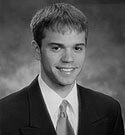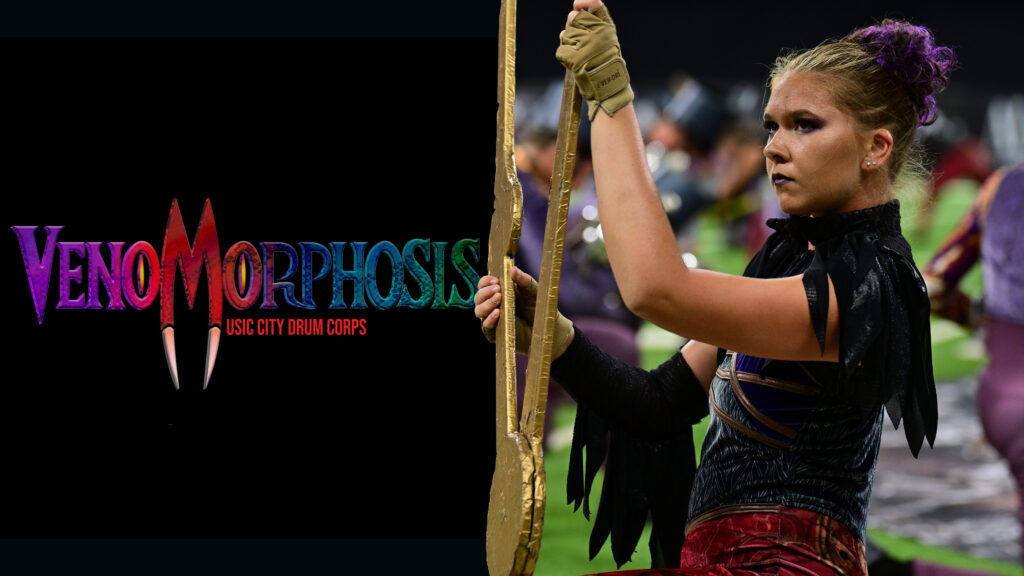
It’s come to the point in drum corps where if a corps wants a new look — or even tweak in the fit — they call Michael Cesario. And why not? Cesario is the man behind the white Phantom Regiment uniforms introduced in 1987. He revolutionized the Cavaliers’ look in 1984 and took the classic Blue Devils uniform and tweaked it to create a modern flair. He’s responsible for the current look of the Boston Crusaders, Blue Knights, Colts, Crossmen, Magic and Cascades.
“Sometimes the designs I do for a corps are revolutionary,” Cesario said. “Other times, for corps with a distinct look, I’m capturing the history. You don’t want people to ask, ‘Who is that?’ You want, ‘Of COURSE that’s Phantom!’ Or, ‘If that’s not the Cavaliers, I don’t know what is.’ I try to determine what people love about these corps and capture that as a visual cue.”
While drum corps fans tend to be traditionalists who want their beloved corps to stick with the familiar, Cesario points out that fashions do change, fabric and technology progress and improvements can be made. You may love your old basketball sneakers, but chances are after 10 years there’s a pair that support your legs better, look nicer and might even help you jump higher.
The Design Process
How does he do it? “Some people think I just go in and start changing things,” he said, “and that’s not it at all.” Cesario, who has a master’s degree in theatre design and is the director of Design for Theatre and Film at New York’s Purchase College, has loads of experience designing for Broadway, television, Disney, Vegas and a plethora of marching bands. There’s a method to his mad designs:
1. Point of View.
“I get a point of view of the corps,” he said. “What do boosters, members and fans think about the corps? What does the corps contribute to the drum community? Sometimes, it’s almost imperceptible.”
2. Abstract Image.
“For BD, the image was an iceberg — sharp. They’re built for the night. You’ll notice there’s no white anywhere in the uniform.”
3. Realization
“This is, ‘how are we going to make it happen?’ I have a terrific pattern maker. I’m not going to tell you who it is, of course. He really understands because his background comes from dance. We both know where to have fabric move and give — and where you don’t need room. The object is, for example, to give room to put your horn up without the uniform going all over the place.”
Cesario said one key to realization is to consider the outfit as a line of uniforms and not just one isolated individual. He’s big on simplicity that creates one effect when you consider the sum of the parts.
After making a few hand-painted color sketches, Cesario and the corps designers select a design and go to work. Cesario is fortunate to work for the Fred J. Miller uniform company, a DCI championship sponsor. Cesario is proud of the uniforms’ durable, washable material. That’s a must for corps that perform 50 times a year in hot, sweaty conditions.He takes his work so seriously that he developed unique, copyrighted colors for the Blue Devils and Cavaliers.
Tips for designing uniforms
Cesario offered two suggestions. First, keep uniform jackets short if you want to make your corps members look taller. “Have you ever noticed how short the Cavaliers’ jackets are?” he asked.Second, if you’re designing guard uniforms, all shapes and sizes of people need to be considered. Certain body types “will look good in anything,” he said.
Contacting Cesario
If you’d like Cesario’s help with your band or corps uniform, go to fredjmiller.com. Chris Hollenback marched in the Madison Scouts drum line from 1991-97.





